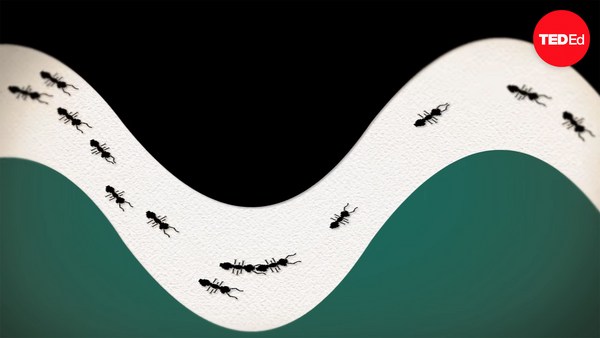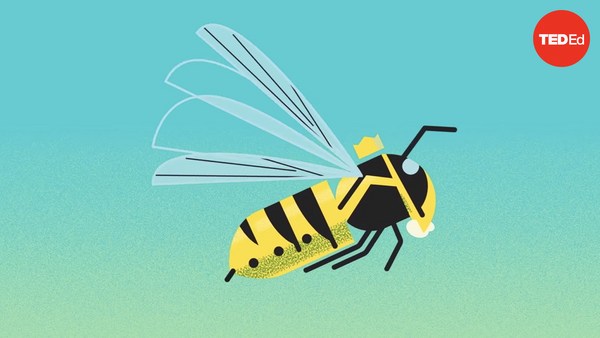In this south Texas clearing, an ancient tale that ties the members of four species together is unfurling. The first involved is our soon-to-be queen leafcutter ant. The second is this fungus, a piece of which she scoops into her mouth pocket. The third are these tiny cockroaches, which nestle under her wings. And the fourth is the one that threatens them all. But it’ll reveal itself later.
In a flapping-wing frenzy, our ant takes to the sky. This is the only chance she’ll have to mate, so she stores as much sperm as she can from the males she meets in midair. After dropping to the ground, she sheds her wings and begins digging. She excavates a tunnel and a side chamber, then plugs the entrance, sealing herself in. There, she regurgitates the fungus. This pile of puke will form the bedrock of her kingdom. Over the following weeks, in between laying eggs and consuming the infertile ones, she tends to her developing fungal garden, fertilizing it with feces.
Finally, her first offspring surge forth and establish a rhythm. Soldiers guard the nest while foragers set off to find tender foliage. The larger foragers, equipped with powerful mandibles, anchor themselves on leaves and chomp away in a wide arcs. Holding these pieces aloft, which can weigh more than eight times their body mass, the workers march back to the nest. Meanwhile, the colony’s smallest ants clean the leaf fragments of debris and pathogens.
But the colony doesn’t eat these morsels. Instead, the ants use them to sustain their fungus, which, in turn, sustains the colony. More than 10 million years ago, leafcutter ants domesticated fungus. Like many of our crops, the fungus they farm is genetically distinct from its wild relatives and can no longer survive without their help. Reciprocally, the fungus provides the ants with an essential amino acid and digestive enzymes they’ve lost. Once the workers return to the nest with their spoils, they crush up the leaves, making their offerings easier for the fungus to consume.
Foragers work tirelessly over the following months. They create thousands of trails, stretching hundreds of meters. All of them are perfumed with the ants’ pheromones and constantly cleaned to function as efficient highways. Meanwhile, the queen lays thousands of eggs every day and is tended to by members of her entourage, which nourish her with the large, infertile eggs they lay.
Among enclosures containing garbage and growing larvae, workers tend fungal gardens in various chambers throughout the colony. They prune bits of the fungus to stimulate growth and strategically open and close surface tunnels, controlling the humidity.
But ants aren't the only animals down here. Tiny cockroaches like those that originally crept under the queen’s wings feed opportunistically off the fungus. Each could fit on the head of a Q-Tip. They hitch rides on soon-to-be queens, and make their way to more established colonies. Inside the leafcutter nest, they’re undercover: closely mimicking the ants’ signature scent, they frolic and feed in the fungal gardens, mostly undetected.
And here’s where this tale’s antagonist rears its virulent fruiting body: our elusive fourth character is a parasitic micro-fungus called Escovopsis. If left unchecked, it would destroy the fungal gardens and the ants and the cockroaches that depend on them. The leafcutters mount a barrage of defenses. They rigorously weed Escovopsis out and partner up with different microorganisms like yeasts and bacteria to stunt its growth.
Eventually, the leafcutter colony covers several meters of underground tunnels, comprises millions of workers, and can defoliate a tree in a single night. The queen’s kingdom will persist as long as she does, which may be over a decade. Every spring, some of the queen’s offspring prepare to leave. They grab a piece of home and crowd the surface chambers, preparing to fly off and mate, beginning the cycle anew.


